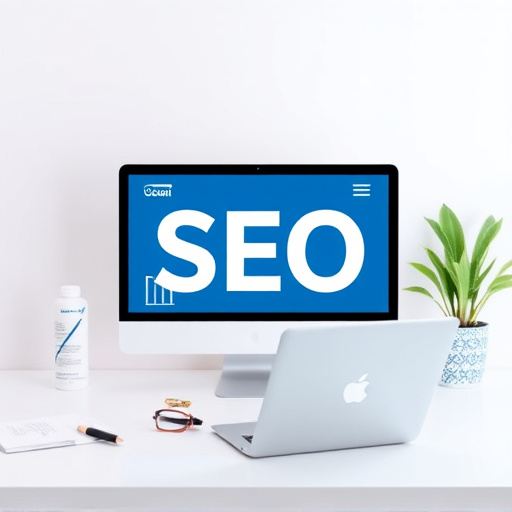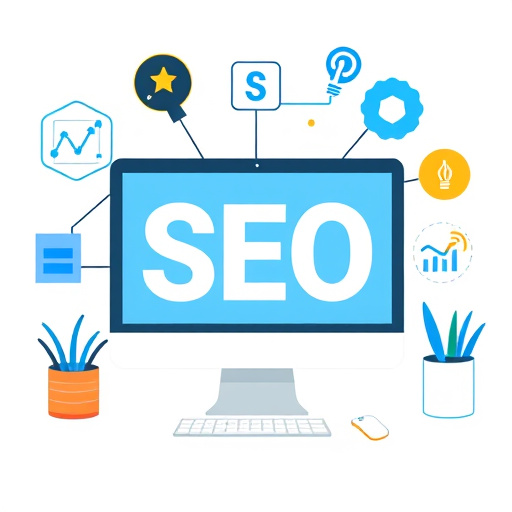To optimize a website for SEO beginners, focus on user experience (UX) by improving site speed, mobile responsiveness, and navigation. Use tools like Google Analytics and PageSpeed Insights to test KPIs and identify slow elements. Optimize images, implement caching, and improve meta tags to enhance performance and search rankings. These steps foster a positive UX, encouraging user engagement and better indexing by search engines.
Looking to boost your site’s performance and improve user experience? This guide is your go-to resource. Discover how a swift website doesn’t just delight visitors but also enhances your search engine optimization (SEO) rankings. We’ll walk you through key steps, from grasping the deep impact of user experience on SEO to implementing effective strategies like image optimization and caching. By following these practices, you’ll learn how to optimize your website for better speed and SEO, even as a beginner.
- Understand User Experience and Its Impact on SEO
- Conduct a Comprehensive Website Speed Test
- Optimize Images and Resources for Faster Load Times
- Implement Caching to Boost Performance
Understand User Experience and Its Impact on SEO

Understanding user experience (UX) is paramount when optimizing your website for search engines (SEO), especially for beginners looking to master SEO basics. A seamless website design that prioritizes UX can significantly impact your site’s visibility and performance in search results. When users enjoy a website, they stay longer, interact more, and are more likely to convert, which signals to search engines that your site is valuable and relevant.
In the world of SEO, user experience isn’t just about aesthetics; it involves simple yet effective techniques like fast loading times, mobile responsiveness, easy navigation, and high-quality content. By implementing these seo basics for small business websites, you create a positive feedback loop where improved UX encourages longer visits, lower bounce rates, and better search rankings. So, when you’re learning how to optimize your website for SEO, remember that focusing on user satisfaction is not just good for your visitors; it’s also a crucial component of successful SEO strategies. Visit us at seo basics for small business websites anytime to learn more about simple seo techniques for websites.
Conduct a Comprehensive Website Speed Test

To optimize your website for SEO beginners and enhance user experience, start by conducting a comprehensive website speed test. Using tools like Google Analytics and PageSpeed Insights, you can identify key performance indicators (KPIs) that affect site speed. These tools provide detailed insights into page loading times, identifying slow-performing elements that need attention.
Remember, a seamless website design for search engines isn’t just about aesthetics; it’s also about ensuring your site loads quickly and functions smoothly. By prioritizing content delivery network (CDN) implementation, minifying code, and optimizing images, you can significantly improve user experience. Begin from scratch with these SEO tips, and consider integrating heatmap analysis to understand user behavior better. Give us a call at Building Quality Links for Website Growth to learn more about how to use Google Analytics for SEO and enhance your site’s visibility.
Optimize Images and Resources for Faster Load Times

Optimizing images and resources is a key step in enhancing your website’s speed and improving user experience, especially for SEO beginners looking to maximize mobile-friendliness. Start by compressing images without losing quality; many tools are available that can reduce file sizes significantly. Next, consider using modern image formats like WebP or AVIF, which offer better compression than traditional JPEGs and PNGs.
Additionally, leveraging browser caching can dramatically speed up load times. Enable caching for static resources such as images, CSS files, and JavaScript by setting appropriate headers on your server. This ensures that subsequent visits to your site load these assets faster from the user’s device or a network cache, contributing to better measuring website performance for SEO.
Implement Caching to Boost Performance

Implementing caching is one of the simplest yet powerful simple seo techniques for websites that can significantly boost your site’s performance. By storing frequently accessed data in a temporary cache, your server doesn’t have to retrieve it from the database every single time, leading to faster page loads and an improved user experience. This is especially beneficial for dynamic websites with frequent updates. There are various caching plugins available for popular content management systems (CMS) like WordPress, making the process straightforward even for beginners.
When optimizing your website for SEO, remember that tips for optimizing meta tags and descriptions also include efficient caching practices. Efficient caching not only enhances page speed but also allows search engines to crawl and index your site more effectively. As a beginner, start by enabling browser caching and then explore server-side caching options tailored to your platform. Additionally, what is on-page seo for beginners involves understanding that cached content should be updated regularly to ensure accuracy, especially around product details or blog posts. So, while optimizing meta tags and descriptions, don’t forget the importance of caching as a fundamental step in boosting your site speed and SEO efforts, ultimately guiding you to find us at how to do keyword research as a beginner.
Optimizing your site speed is a powerful strategy for enhancing user experience, especially for SEO beginners. By understanding the impact of UX on search rankings and implementing strategies like conducting thorough speed tests, optimizing media assets, and utilizing caching, you can significantly improve your website’s performance. These steps ensure not only a better user journey but also boost your online visibility, making it easier for folks to discover and engage with your content. Start implementing these techniques today to revolutionize your website’s efficiency.
